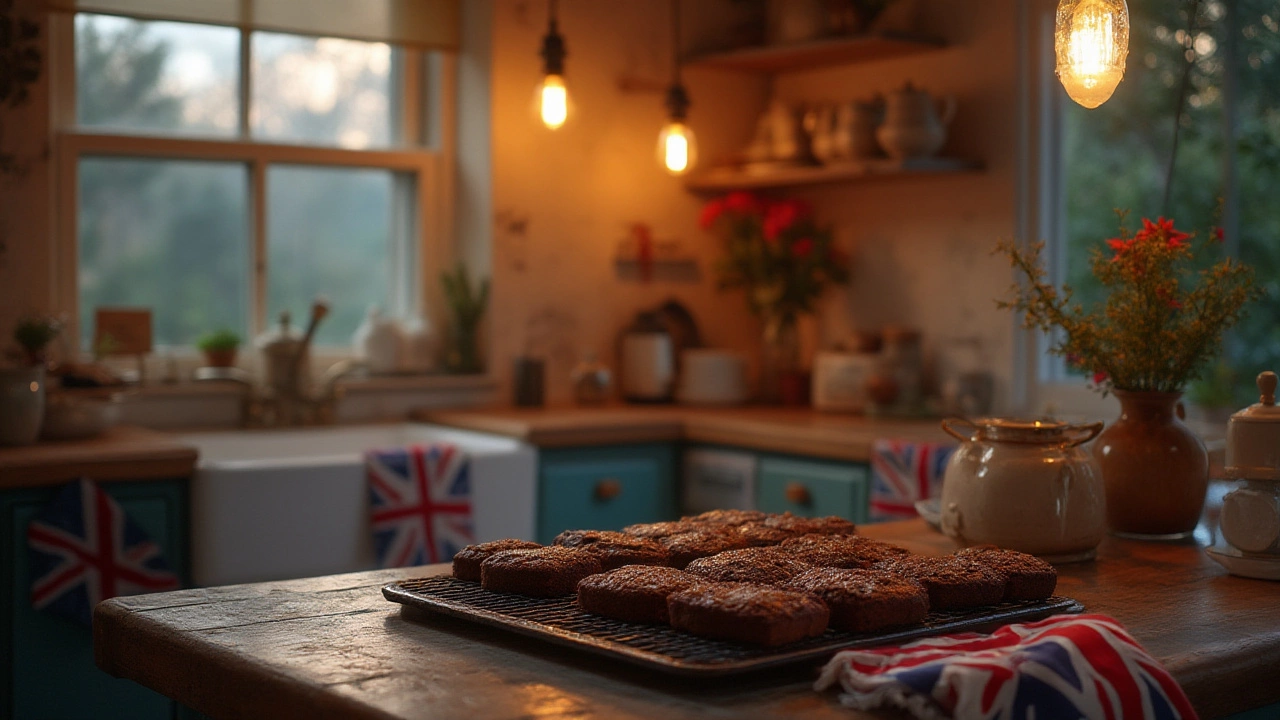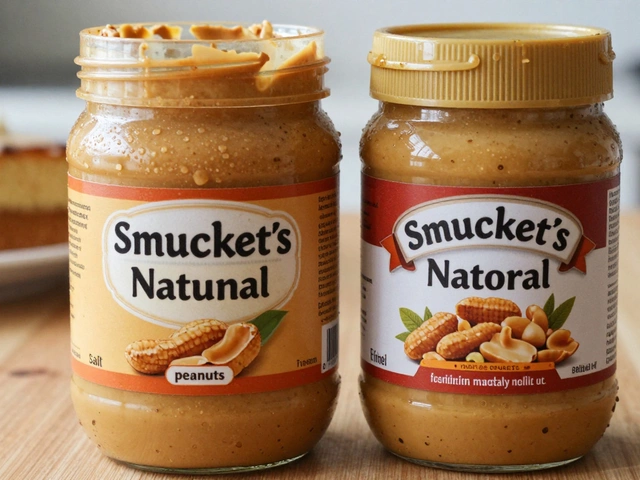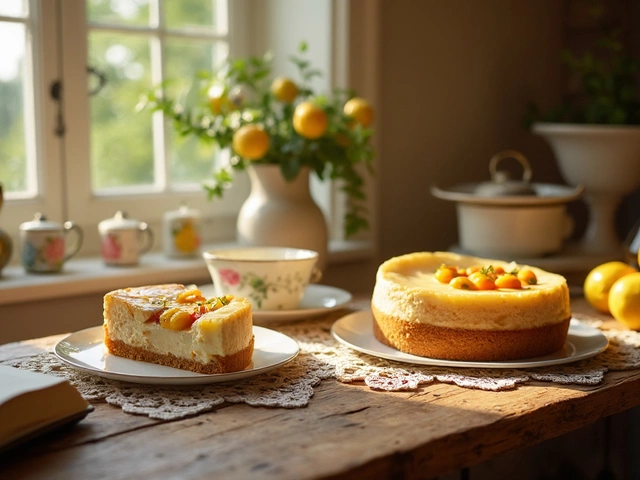You know the feeling: you’ve just pulled a tray of fresh, gooey brownies out of the oven, the whole kitchen smells like chocolate heaven, and you’d rather not wait at all before digging in. But hey, life’s busy, and that sweet tooth doesn’t always hit at midnight. So, can you actually leave brownies to cool overnight? It’s a legit kitchen question—and not just for people who forget them on the counter after a late-night baking session.
Turns out, there’s some real science (and a little bit of kitchen controversy) behind how you cool, store, and keep your brownies fresh. Chocolate treats have their own weird ways of behaving when you play with temperature and air. Let’s break down how to get the best texture, lock in that signature fudgy taste, and avoid waking up to a sad, stale brick instead of a perfect square of joy.
The Science Behind Cooling Brownies: Why Time and Air Matter
Baking brownies isn’t just about nailing the batter; the cool-down is where a huge part of the magic happens. Right out of the oven, brownies are usually too soft to cut cleanly, and the internal structure is still settling. The smell is torture, but patience pays off. The main reason brownies benefit from cooling is starch retrogradation—the process where starch molecules realign as they lose heat and moisture, helping your brownies firm up, hold their shape, and slice with that deliciously neat edge.
Even more, cooling affects chocolate flavor. Warm brownies may taste rich, but as they cool, subtle notes in the chocolate become way more noticeable. Changing temps literally alter what our noses and taste buds notice. There’s even proof: A study from the University of Nottingham found that cooling chocolate-based bakes lets flavors "bloom" as fats and sugars settle (University of Nottingham).
Airflow is another piece of the puzzle. Cool brownies in the pan on a wire rack if you can. It helps air circulate, preventing steam from sogging up the bottom or making the edges too hard. Some bakers swear by lifting parchment paper and letting steam escape early. Here’s where timing matters: quick, forced cooling (like tossing hot brownies in the fridge) can make chocolate seize or even dry out the whole batch. Slow cooling at room temp wins for flavor and moisture retention.
Safe Storage: Can You Really Leave Brownies Out All Night?
This is where the debate gets spicy. On one hand, brownies don’t contain highly perishable ingredients like fresh cream cheese or fruit. If you live somewhere with mild humidity and reasonable temperatures—like a typical Halifax summer night—brownies can generally be left out, loosely covered with foil or a clean towel. In fact, this has been the "grandma method" for decades.
Bacteria like to party between 4°C and 60°C (that’s 40°F to 140°F), but plain brownies with no dairy frostings are low-risk. The high sugar content acts as a natural preservative. According to the USDA, baked goods with no perishable toppings can safely stand at room temp for up to 2 days if properly covered (USDA).
But not covering brownies at all is a ticket to dry-out city. If you’re planning to keep them overnight, here’s what works:
- Let brownies cool in the pan for 1-2 hours (to room temp).
- Either cover the pan with foil or transfer brownies to an airtight container.
- If humidity is high or you have curious indoor pets, always use a sealed container to prevent both staleness and midnight "accidents."
If your brownies have cream cheese or perishable add-ins (think cheesecake swirl or mascarpone), absolutely move them to the fridge after an hour on the counter. Food safety comes first—nobody needs a chocolate-cursed morning.
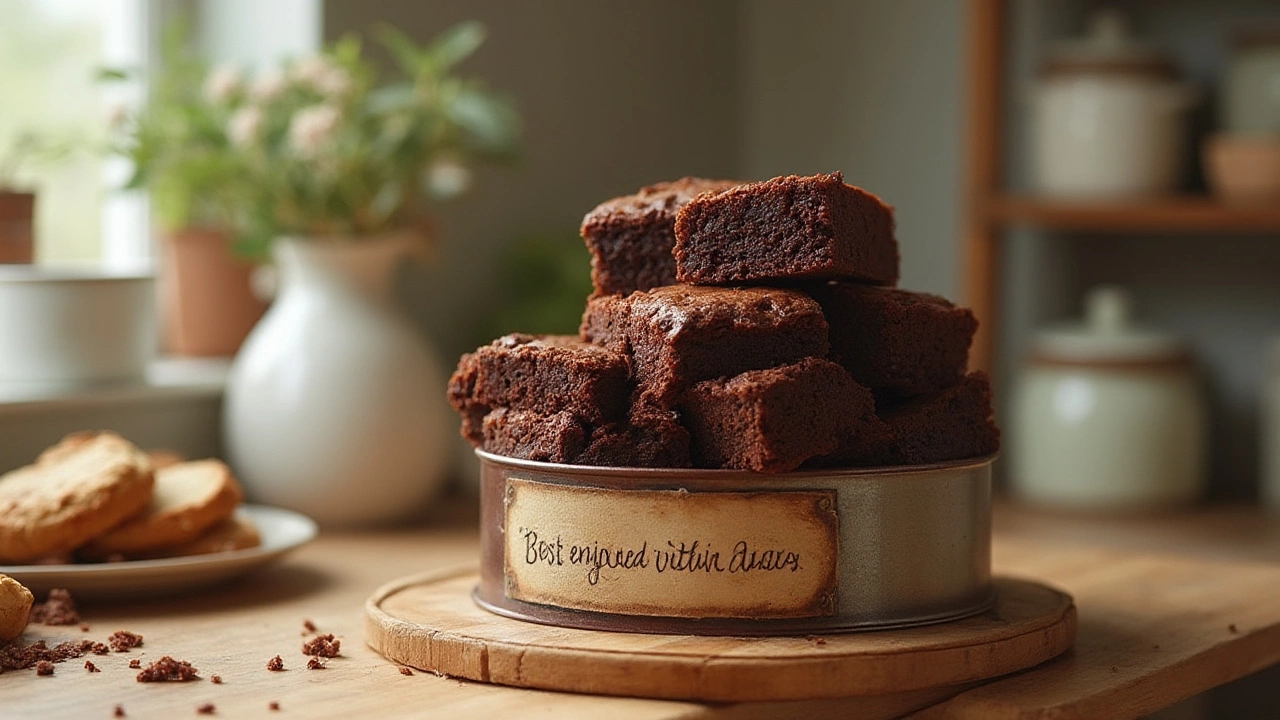
Texture Tips: Keeping Brownies Fudgy, Not Dry
No one craves a dry, crumbly brownie—unless you’re using them for brownie croutons. (Is that even a thing?) Air exposure is the biggest enemy to chewy, fudgy texture. When left cut and uncovered overnight, brownies lose moisture quickly. On the other hand, a smothered, foil-wrapped warm pan might make the top soft and sticky, robbing you of that classic papery crust. So what’s the right move?
Here are some kitchen-tested tips to keep your brownies *the* right kind of soft:
- If you like a crisp top but soft interior, cool totally uncovered for the first 30 minutes, then loosely cover.
- Once fully cool (about 2 hours), slice and move the brownies to an airtight container with a piece of parchment between layers.
- Pop a slice of bread into the container if you expect to keep them for more than a day. The bread absorbs excess air moisture, keeping brownies chewy.
- For real emergency freshness, wrap uncut brownies in plastic wrap and store in a resealable bag overnight.
Ever wondered why bakery brownies taste softer? Many pros wrap their trays while they’re just slightly warm—the steam locks in suppleness for that just-baked mouthfeel. Just don’t trap too much moisture, or you’ll be dealing with texture that’s too gooey, almost raw.
Here's a little cheat sheet you can stick to the fridge:
| Storage Method | Texture Next Day | Pro-Tip |
|---|---|---|
| Uncovered | Drier, crisp edges | Good for crunchy fans |
| Loosely covered | Balanced, chewy | Ideal for most |
| Airtight container | Super-soft, rich | Best for dense, moist brownies |
To quote cookbook author Stella Parks:
“Brownies get better as they stand. A good overnight rest lets flavors meld and the crumb turn a little fudgier.”
Health and Safety: When to Refrigerate Brownies
So, is it ever "unsafe" to let brownies sit out all night? Pure chocolate brownies with no dairy fillings can handle room temp overnight just fine. The risk climbs if:
- It’s super humid and hot (think tropical, not a typical Canadian night).
- The brownies contain fresh cream, eggs not fully baked, cream cheese, or milk-based frostings.
- Your kitchen is a bug magnet. Ants have ruined many a late-night snack.
If you’re storing brownies for more than two days, or they’re loaded with extras, refrigeration is best. Be warned, though: fridge air can zap out brownie moisture. To keep texture, wrap each square in plastic wrap, then stash in an airtight container. You can let them come back to room temp or give them a 10-second microwave blast to soften.
Never leave frosted or cream cheese brownies out overnight. The same goes for brownies with fresh fruit. According to the leave brownies overnight debate in food safety circles, the official answer is only plain brownies get this room-temp pass. Better safe than sick, right?
If you’re freezing brownies (for a future snack emergency), wrap tightly in plastic and aluminum foil. Brownies can last up to three months in the freezer, and you might be shocked at how little they change if you let them thaw slowly at room temp when ready to eat.
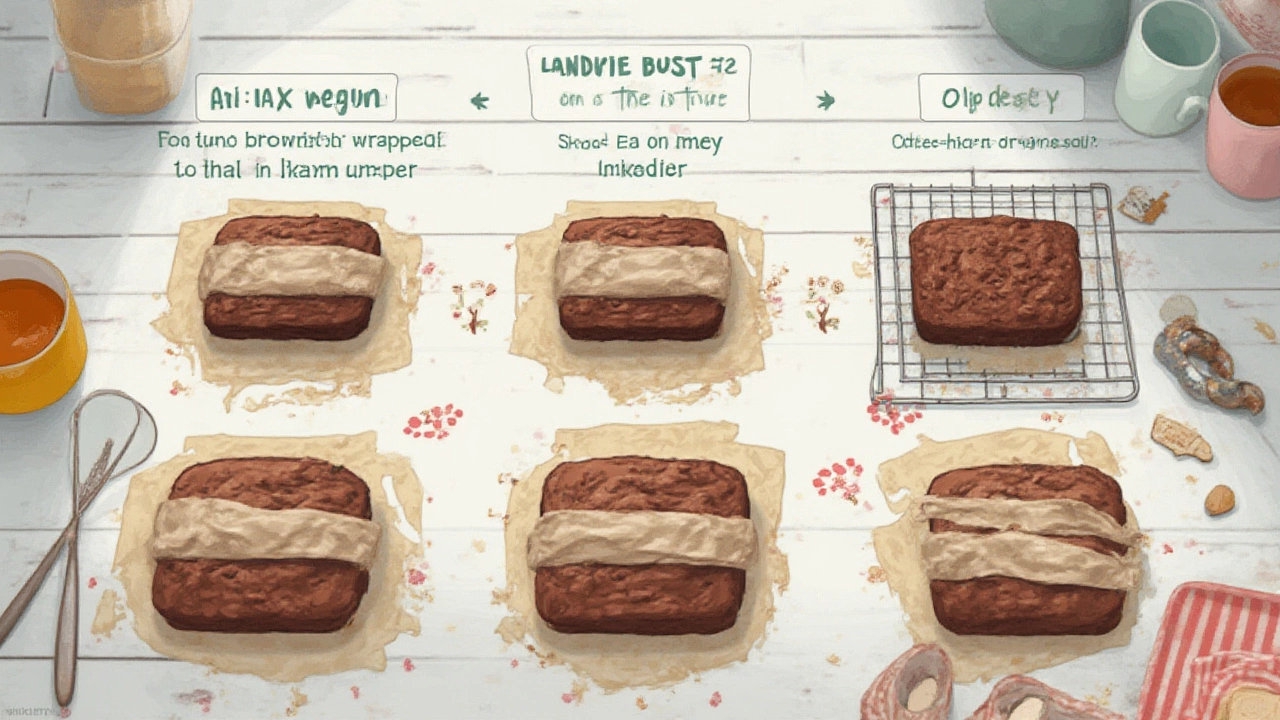
Expert Advice and Common Mistakes to Avoid
There’s always something new in the world of baking myths. One hilarious myth: sticking a knife in the pan to check if they’re set. Many expert bakers actually advise against this for brownies—gooey interiors are perfect, and the insert test ruins that fudge line in the center. Another common goof: storing brownies before they’re totally cool. This traps steam and guarantees a sticky surface or soggy base.
If you’re baking in a glass dish, don’t leave brownies cooling on the stovetop—residual heat from the oven can keep cooking them from below and dry them out. Always let brownies cool on a wire rack, which lets air get under the dish and stops further baking.
More practical mistakes to doge:
- Slicing brownies while hot—they’ll fall apart and look a mess.
- Stacking brownies before they’re cool—the bottoms will stick, and you lose those crisp edges.
- Forgetting to cover brownies in dry winter air; they turn into chocolate dust by morning.
- Stashing brownies next to onions or strong-smelling foods—these will absorb odors and lose that perfect chocolate aroma.
Professional bakers often use cooling tunnels to standardize brownie texture, but your kitchen is fine with patience and a trusty rack.
Where do you keep leftover brownies to keep the flavor pop? At room temp for up to two days is best. Longer than that, and they’re freezer-bound—unless you’ve got a bevy of brownie fans on hand. If you’re gifting brownies, pack them in parchment and a snug box so they hold up overnight and still taste bakery-fresh in the morning.
If you want top-tier brownies, there’s one final trick: underbake by a minute or two, then trust that overnight rest to perfect the fudginess. It’s about knowing the sweet spot between food safety and flavor science. And if you wake up to leftover brownies? That’s never a bad thing.

